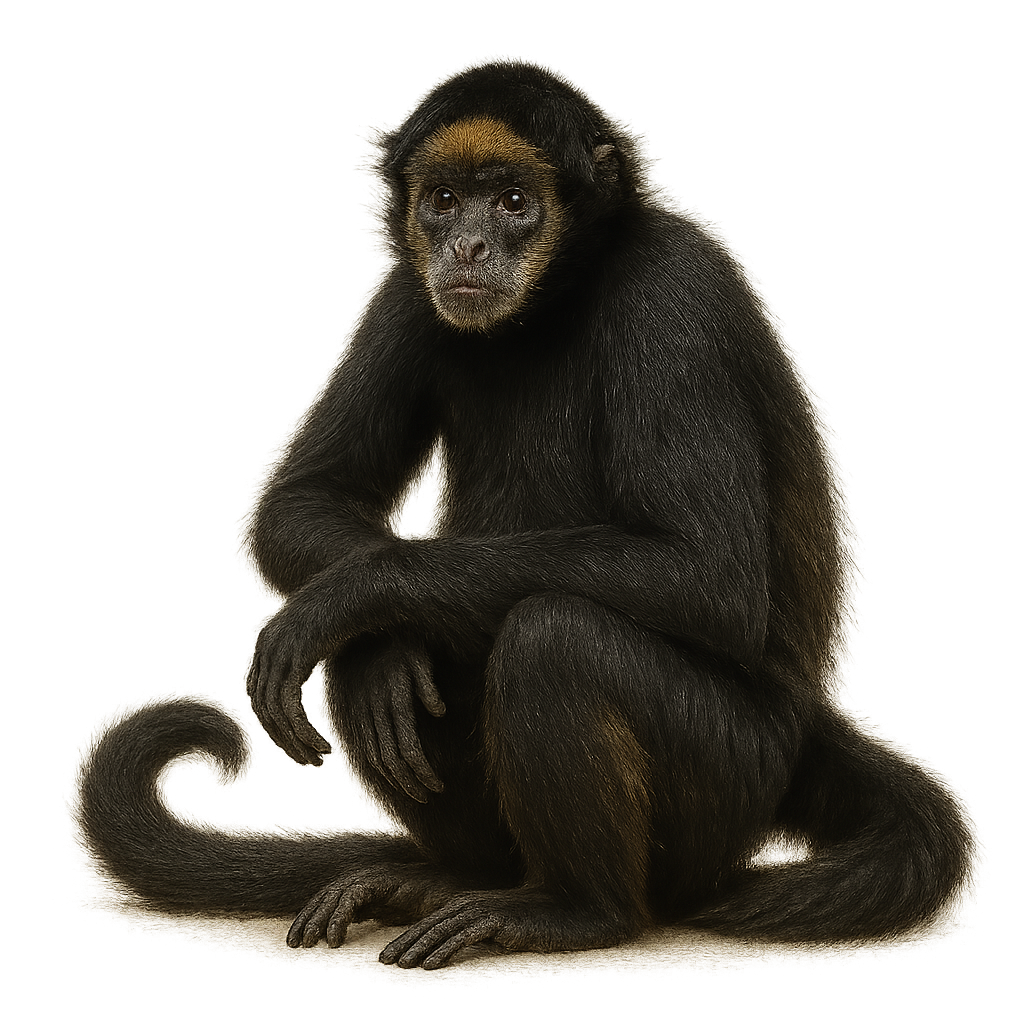Your wildlife photography guide.
Explore the white-bellied spider monkey in detail, study its behavior, prepare your shots.
Where to observe and photograph the white-bellied spider monkey in the wild
Learn where and when to spot the white-bellied spider monkey in the wild, how to identify the species based on distinctive features, and what natural environments it inhabits. The WildlifePhotographer app offers tailored photography tips that reflect the white-bellied spider monkey’s behavior, helping you capture better wildlife images. Explore the full species profile for key information including description, habitat, active periods, and approach techniques.
White-bellied spider monkey
Scientific name: Ateles belzebuth

IUCN Status: Vulnerable
Family: ATELIDAE
Group: Mammals
Sensitivity to human approach: Suspicious
Minimum approach distance: 10 m
Rut period: April to May
Gestation: 226-232 jours
Births: November to December
Habitat:
Tropical forests, rainforests, lowland forests
Activity period :
Primarily active during the day, with peak activity in the morning and late afternoon.
Identification and description:
The white-bellied spider monkey, Ateles belzebuth, is an arboreal primate primarily inhabiting the tropical forests of South America. Recognizable by its black fur and distinctive white face, it has long limbs and a prehensile tail that enable agile movement through the canopy. This social monkey lives in groups of up to 30 individuals, although they often split into smaller subgroups to forage. Primarily frugivorous, it also consumes leaves, flowers, and insects. Unfortunately, Ateles belzebuth is threatened by deforestation and hunting, leading to a decline in its population.
Recommended lens:
400 mm – adjust based on distance, desired framing (portrait or habitat), and approach conditions.
Photography tips:
To photograph the white-bellied spider monkey, it is advisable to use a telephoto lens of at least 400mm to capture detailed images from a distance. As these monkeys are suspicious, it is important to remain discreet and blend into the environment to avoid scaring them. Opt for early morning or late afternoon hours when the light is soft and the monkeys are active. Use a tripod to stabilize your camera and adjust your settings to compensate for the monkeys' quick movements in the trees.
The WildlifePhotographer App is coming soon!
Be the first to explore the best nature spots, track rutting seasons, log your observations, and observe more wildlife.
Already 1 432 wildlife lovers subscribed worldwide

